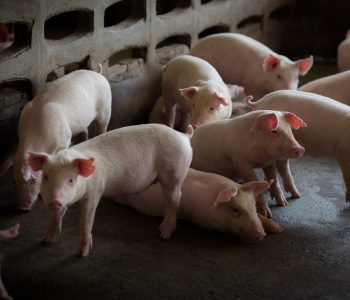Addressing Environmental Challenges in Pig Farming
Environmental contamination from nitrogen and phosphorus excretion has long been a major issue in pig farming, particularly during the growing–finishing phases. These nutrients, when not properly managed, can contribute to significant environmental problems, including water pollution and greenhouse gas emissions. Traditionally, pig farmers have relied on Group 3-Phase Feeding (CGF) systems, where large groups of pigs receive the same feed over extended periods. However, this approach often leads to inefficient nutrient utilization, resulting in excessive excretion and increased environmental impact.
Recognizing the need for more sustainable practices, researchers have been exploring alternatives that could reduce these negative effects. One promising approach is Individual Precision Feeding (IPF), which involves tailoring daily diets to the specific nutrient requirements of each pig. By better matching feed intake with nutritional needs, IPF has the potential to reduce waste and improve the overall efficiency of pig farming operations.
The Study: Evaluating Environmental Impact Through Life-Cycle Assessment
In a comprehensive study conducted in Quebec, Canada, researchers sought to evaluate the environmental benefits of shifting from CGF to IPF systems. Using Life-Cycle Assessment (LCA), they modeled the environmental impact of both feeding strategies across various stages of pig production. The LCA included inputs and outputs from raw material production, feed mill processing, transportation, animal rearing, and manure management. The study was designed to reflect real-world conditions, using actual management data from an average pig farm in Quebec.
By comparing IPF and CGF systems, the researchers aimed to quantify the potential reductions in Global Warming Potential (GWP), Acidification Potential (AP), and Eutrophication Potential (EP)—key indicators of environmental impact. The study found that transitioning to IPF led to a 7.6% reduction in GWP, a 16.2% decrease in AP, and a 13.0% reduction in EP. These significant improvements were largely due to the more efficient use of feed resources in the IPF system, which minimized the need for environmentally intensive ingredients like corn and soybean meal.
Implications: Toward a More Sustainable Future
The findings of this study underscore the potential of Individual Precision Feeding to revolutionize pig farming by making it more environmentally sustainable. By reducing harmful emissions and improving feed efficiency, IPF offers a viable solution to some of the most pressing environmental challenges associated with livestock production. Moreover, this innovative approach not only benefits the environment but also provides economic advantages by lowering feeding costs and enhancing livestock performance.
The results of this research suggest that adopting IPF systems could play a critical role in the future of sustainable pig farming, not just in Quebec but potentially in other regions with similar agricultural practices. As the industry continues to seek ways to reduce its environmental footprint, precision feeding represents a promising pathway toward achieving these goals.
For a deeper dive into the study’s findings and their implications, you can access the full article here.
Source: “Berta Llorens, Candido Pomar, Bernard Goyette, Rajinikanth Rajagopal, Ines Andretta, Maria Angeles Latorre, Aline Remus, Precision feeding as a tool to reduce the environmental footprint of pig production systems: a life-cycle assessment, Journal of Animal Science, Volume 102, 2024, skae225, https://doi.org/10.1093/jas/skae225″
